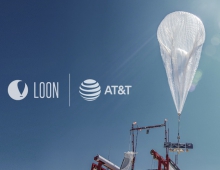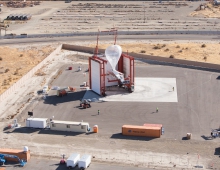
Google To Bring Internet To 100 million Indonesians
Starting next year, the top three mobile network operators in Indonesia will begin testing Alphabet's (Google) Project Loon balloon-powered Internet. Over the next few years, Google is hoping that Loon will help put high-speed LTE Internet connections within reach of more than 100 million Indonesians, giving them access to the limitless educational, cultural, and economic opportunities of the Internet.
Alphabet officials, including co-founder Sergey Brin, and representatives from Indonesian companies Telkomsel, XL Axiata Tbk PT (EXCL.JK) and Indosat Tbk PT (ISAT.JK) signed an agreement Wednesday to bring Project Loon to the nation of 250 million people.
In Indonesia today, only about 1 out of every 3 people are connected to the web, and most of their connections are painfully slow. Many people live in areas without existing Internet infrastructure; on an archipelago of over 17,000 islands, with mountains and jungles, it’s difficult to run fiber optic cable or install mobile phone towers. That’s where Loon comes in.
Loon balloons act like floating cell phone towers in the sky. Flying on the winds at altitudes twice as high as commercial planes, each one beams a connection down to the ground; as one balloon drifts out of range, another moves in to take its place. We hope this could help local operators extend the coverage of their existing networks, and reach further into rural and remote areas.
Project Loon balloons travel approximately 20 km above the Earth’s surface in the stratosphere. Winds in the stratosphere are stratified, and each layer of wind varies in speed and direction. By moving with the wind, the balloons can be arranged to form one large communications network.





















